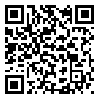Background: More than fifty years have passed since Samuel Kirk used the term learning disability to describe children who average or above average intelligence. In the fact, these children are both puzzling and paradoxical. Generally, they have many problems in school. Term of learning disability in Diagnostic and Statistical Manual of mental disorders, 5th edition (2013) changed and named specific learning disorder (SLD). In recently definition of SLD that had done by American Association of Psychiatric (APA), there had changes in diagnostic criteria. Diagnostic criteria of intelligence quotient and achievement discrepancy named wait to fall model for delay to identification and limited. On the other hand, response to intervention (RTI) replaced it. RTI is a reality in today’s classrooms, bringing with it a wide range of questions.
Conclusion: RTI is a multi-step school improvement approach to provide early academic and behavioral supports. This is expected that for screening, identification and diagnostic pay specific attention to RTI in early intervention.
Received: 2015/Dec/Tue | Revised: 2016/Nov/Sun | Accepted: 2016/Jun/Sat | Published: 2016/Nov/Wed | ePublished: 2016/Nov/Wed
| Rights and permissions | |
 |
This work is licensed under a Creative Commons Attribution-NonCommercial 4.0 International License. |


